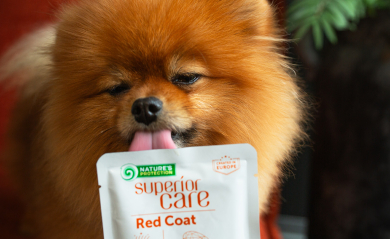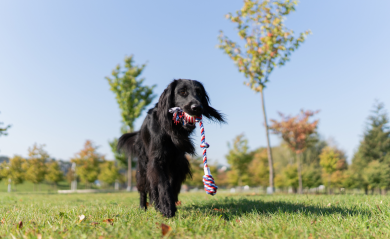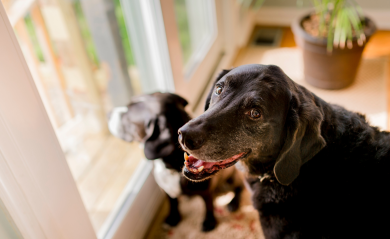How to know if your dog has allergies?
Just like us, dogs can fall prey to allergies, and as devoted pet parents, it's essential to be attuned to these sensitivities. Among the numerous allergy triggers for pets, food often takes the lead. Ignoring your furry friend's allergic symptoms can lead to long-term health complications. So, how can you determine if your dog is struggling with allergies, and, more importantly, how can you help?
Spotting the Initial Signs of Allergy
The initial indicators of a dog's allergies can vary based on the nature of the allergy - be it a food allergy or an environmental one - and the unique sensitivity of your canine companion. Nevertheless, here are some typical early warning signs that could signal your dog's allergic condition:
- Persistent Itching: One of the earliest and most prevalent signs of allergies in dogs is incessant itching. If your dog begins to scratch or lick their skin excessively, especially if this behavior is a recent development, it may well be an early symptom of an allergy.
- Skin Redness and Irritation: You may notice redness, inflammation, or irritation on your dog's skin, particularly in regions like the paws, ears, face, abdomen, or groin.
- Excessive Paw Chewing and Licking: Dogs with allergies often engage in excessive paw chewing and licking, which can result in fur discoloration and loss in the affected areas.
- Frequent Ear Scratching: Frequent scratching or rubbing of the ears can be indicative of allergies, especially if your dog hasn't experienced ear issues in the past.
- Sneezing and Watery Eyes: If your dog starts sneezing, displays a runny nose, or has watery eyes, it may be a result of environmental allergies such as pollen, dust, or mold.
- Digestive Upset: In cases of food allergies, your dog may suffer from gastrointestinal issues like vomiting, diarrhea, or increased gas.
- Behavioral Shifts: Allergies can make dogs feel uncomfortable, leading to changes in behavior. They may appear more restless, irritable, or anxious.
- Hair Loss: Some allergic dogs experience hair loss, initially manifesting as thinning patches in their coat.
Remember that these early signs can escalate and become more severe with continued allergen exposure. Furthermore, some dogs may display multiple of these signs concurrently. If you suspect that your dog may be grappling with allergies based on these initial indications, it's advisable to consult your veterinarian. They can identify the allergy's root cause and develop a management plan to ease your dog's discomfort. Early intervention is vital to prevent the development of severe allergic reactions and associated complications.
Unpacking Food Allergy Culprits
Allergies in pets can stem from a range of sources, including infections, medications, grooming products, and even toys. However, food stands as the primary culprit, with specific proteins and gluten often taking the blame.
Gluten, predominantly found in grain products like wheat, can pose similar digestion challenges for dogs as it does for humans. This underscores the importance of steering clear of food with gluten-containing ingredients. Regarding protein sources in dog food, 68% of allergies are linked to beef, pork, wheat, milk, and their derivatives, while 25% result from chicken, eggs, and soy. The remaining 7% of allergies are attributed to other sources.
To safeguard your pet from adverse reactions, it's crucial to resist the urge to share table scraps. Dogs possess a delicate digestive system, and human food can trigger allergies, stomachaches, or digestive woes. Hence, it's imperative to nourish your four-legged companion exclusively with pet food formulated for their unique needs.
Conquering Allergies: A Path to Relief
When your precious pet exhibits the initial signs of allergies - teary eyes, flaky skin, or redness - it's wise to explore potential causes by making dietary and grooming product adjustments. If the allergic reaction persists or intensifies, seeking professional assistance from specialists becomes paramount.
In the early stages of allergy symptoms, we recommend revisiting your pet's diet first. Steer clear of ingredients containing gluten, chicken, beef, and pork, opting instead for high-quality, balanced, complete feeds, such as those based on white fish, lamb, or salmon.
While food allergies are the usual suspects, another common offender is grooming products, particularly cosmetics. We advocate for a diligent selection of coat care products, as they can exert a significant impact on your pet's well-being, accounting for 20% of the equation. Ensure that grooming products feature a natural composition, devoid of chemical elements like silicones, SLS, parabens, and mineral oils.
After making dietary and fur care product adjustments, closely monitor your pet's condition for approximately 3 to 4 weeks. If allergy symptoms persist, it's advisable to consult a veterinarian to explore other potential causes and seek the most effective solutions for your cherished companion's well-being.


 September 26, 2023
September 26, 2023
 0 comments
0 comments




 March 26, 2025
March 26, 2025






